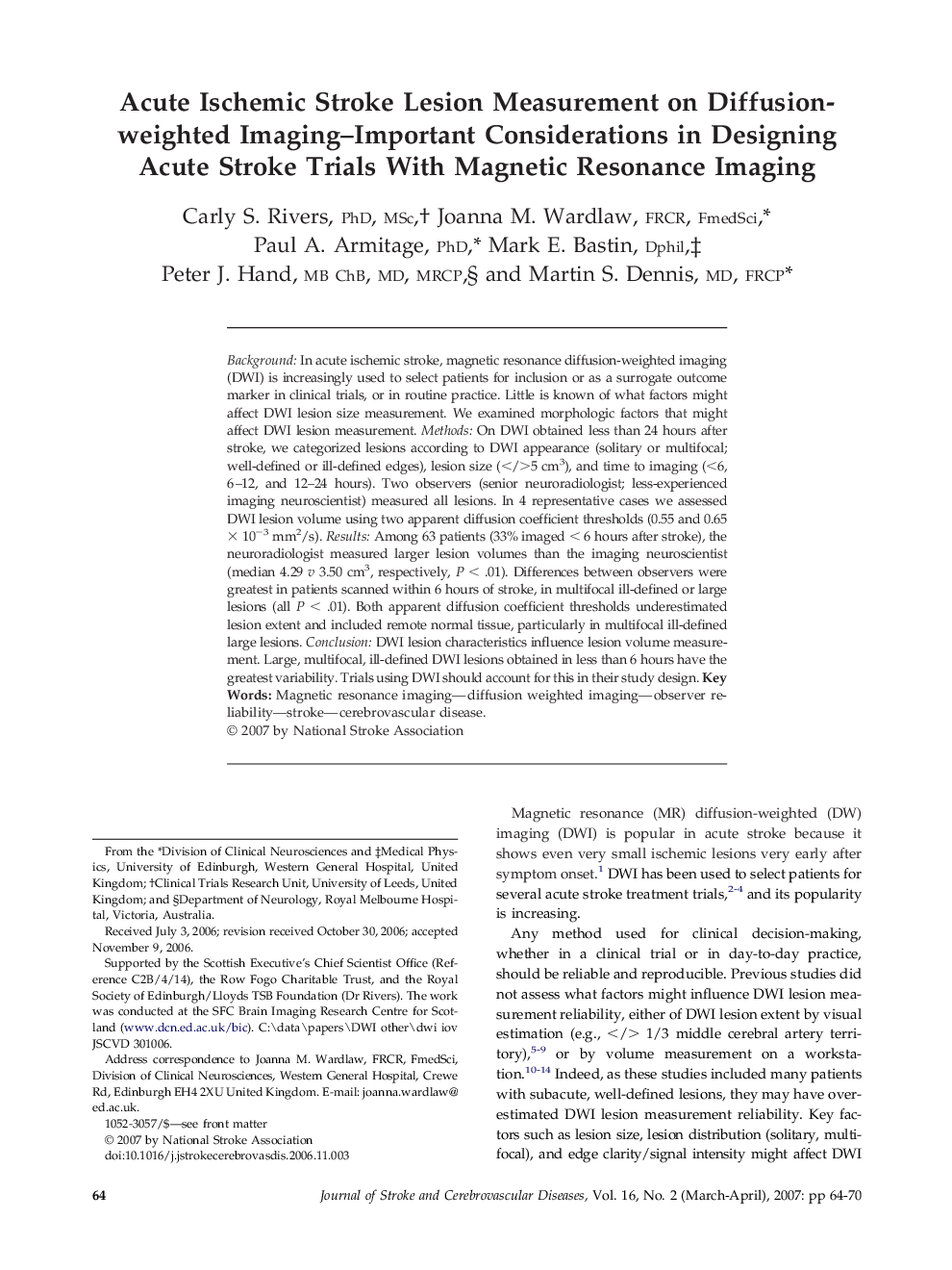| Article ID | Journal | Published Year | Pages | File Type |
|---|---|---|---|---|
| 2704812 | Journal of Stroke and Cerebrovascular Diseases | 2007 | 7 Pages |
Background: In acute ischemic stroke, magnetic resonance diffusion-weighted imaging (DWI) is increasingly used to select patients for inclusion or as a surrogate outcome marker in clinical trials, or in routine practice. Little is known of what factors might affect DWI lesion size measurement. We examined morphologic factors that might affect DWI lesion measurement. Methods: On DWI obtained less than 24 hours after stroke, we categorized lesions according to DWI appearance (solitary or multifocal; well-defined or ill-defined edges), lesion size (5 cm3), and time to imaging (<6, 6–12, and 12–24 hours). Two observers (senior neuroradiologist; less-experienced imaging neuroscientist) measured all lesions. In 4 representative cases we assessed DWI lesion volume using two apparent diffusion coefficient thresholds (0.55 and 0.65 × 10−3 mm2/s). Results: Among 63 patients (33% imaged < 6 hours after stroke), the neuroradiologist measured larger lesion volumes than the imaging neuroscientist (median 4.29 v 3.50 cm3, respectively, P < .01). Differences between observers were greatest in patients scanned within 6 hours of stroke, in multifocal ill-defined or large lesions (all P < .01). Both apparent diffusion coefficient thresholds underestimated lesion extent and included remote normal tissue, particularly in multifocal ill-defined large lesions. Conclusion: DWI lesion characteristics influence lesion volume measurement. Large, multifocal, ill-defined DWI lesions obtained in less than 6 hours have the greatest variability. Trials using DWI should account for this in their study design.
